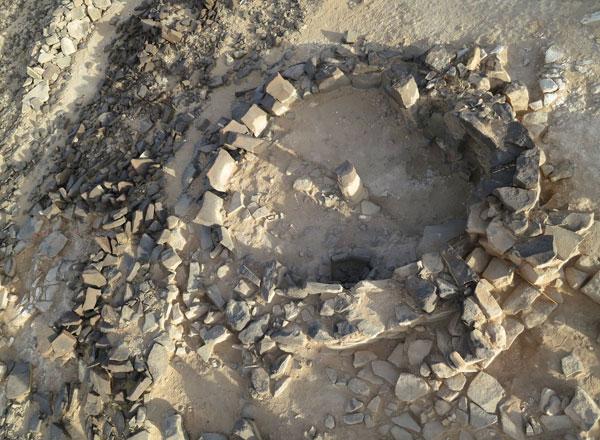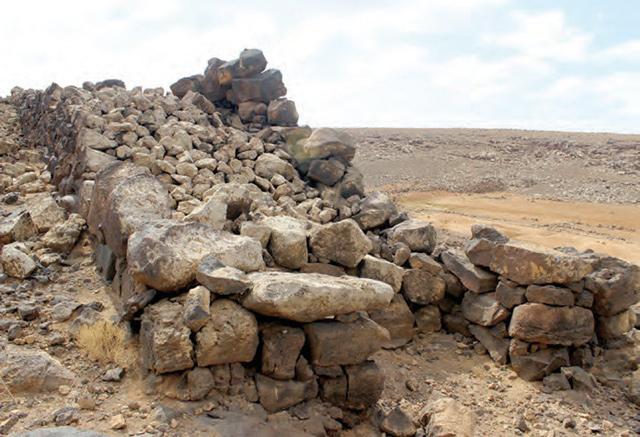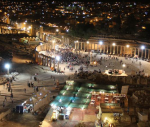You are here
Rediscovering Black Desert: New insights on Neolithic innovation
By Saeb Rawashdeh - May 18,2024 - Last updated at May 18,2024

The aerial view of the Black Desert (Photo courtesy of Bashar Tabbah)
AMMAN — Before the mid-1970’s, the Black Desert area had not been enough explored, noted the scholar Zeidan Kafafi at the lecture “Road of the Rising Sun”, organised on Wednesday by the CBRL Amman Institute.
Jawa, a fortified Bronze Age site in eastern Jordan, was established in the mid-fourth millennium and featured advanced water systems, including canals, dams and agricultural plots, explained Alexander Wasse from Yadipe University in Istanbul.
With a group of colleagues, Wasse spent years studying different archaeological sites in the Black Desert and his presentation consisted of a brief summary of said research.
“Jawa’s population emigrated from the more advanced Mesopotamia,” Wasse claimed, adding that he also studied technical knowledge of the Neolithic people in Jawa and how they managed to store the water in such an arid area.
Seasonal rains can transform the landscape of the Eastern Badia, Wasse said, noting that many traces of thriving Neolithic communities can be traced on these locations. The studying area for the Eastern Badia Archaeological Project spans 40 to 80 kilometres and the team examined the relations between the Black Desert and Mesopotamia, as well as the relations between the Black Desert and northern and southern Levant.
“There is a concentration of 127 cattle petroglyphs, and the question remains whether they are simple zoomorphic drawings or if they have an anthropomorphic component,” Wasse noted, attributing the origin of the Black Desert culture less to post Pre-Pottery Neolithic in migration and more to much earlier disperses.
A second thesis proposed that Neolithic groups were involved in herding and milk production during 7th and 6th millennium. Furthermore, Neolithic communities from the Arabian Peninsula were more active participants in these migrations, ranging from the Indian Ocean to the Mediterranean, Wasse underlined.
“The seventh millennium saw the construction of circular structures for dwelling in Wisad Pools, in the Black Desert,” Wasse said, noting that the doors were very narrow (around 50 centimetres wide).
These structures might have been used for storage space for agricultural products, but this is not yet determined.
The team also found bone needles, cortical knives, stone spears.
The water sources on the eastern margins of the Black Desert form a chain connecting the Nefud Desert in Saudi Arabia with the Syrian Desert. Water management was one of the key topics of the research in the Jawa region and in eastern Jordan. The late Neolithic occupants of the Black Desert were highly skilled architects, as evidenced by the structures that were found by the Eastern Badia Archaeological team, Wasse underlined.
Related Articles
AMMAN — Climate change, particularly drought, created societal shifts in the Black Desert in eastern Jordan, according to a British scholar.
AMMAN — When a group of scholars in 2008 began to work together in the Black Desert (eastern Jordan), they found many piles of rocks that on
AMMAN — Scholars predominantly began exploring Jordan’s prehistory in the mid-1970s, according to a Jordanian archaeologist.“The archaeologi


















